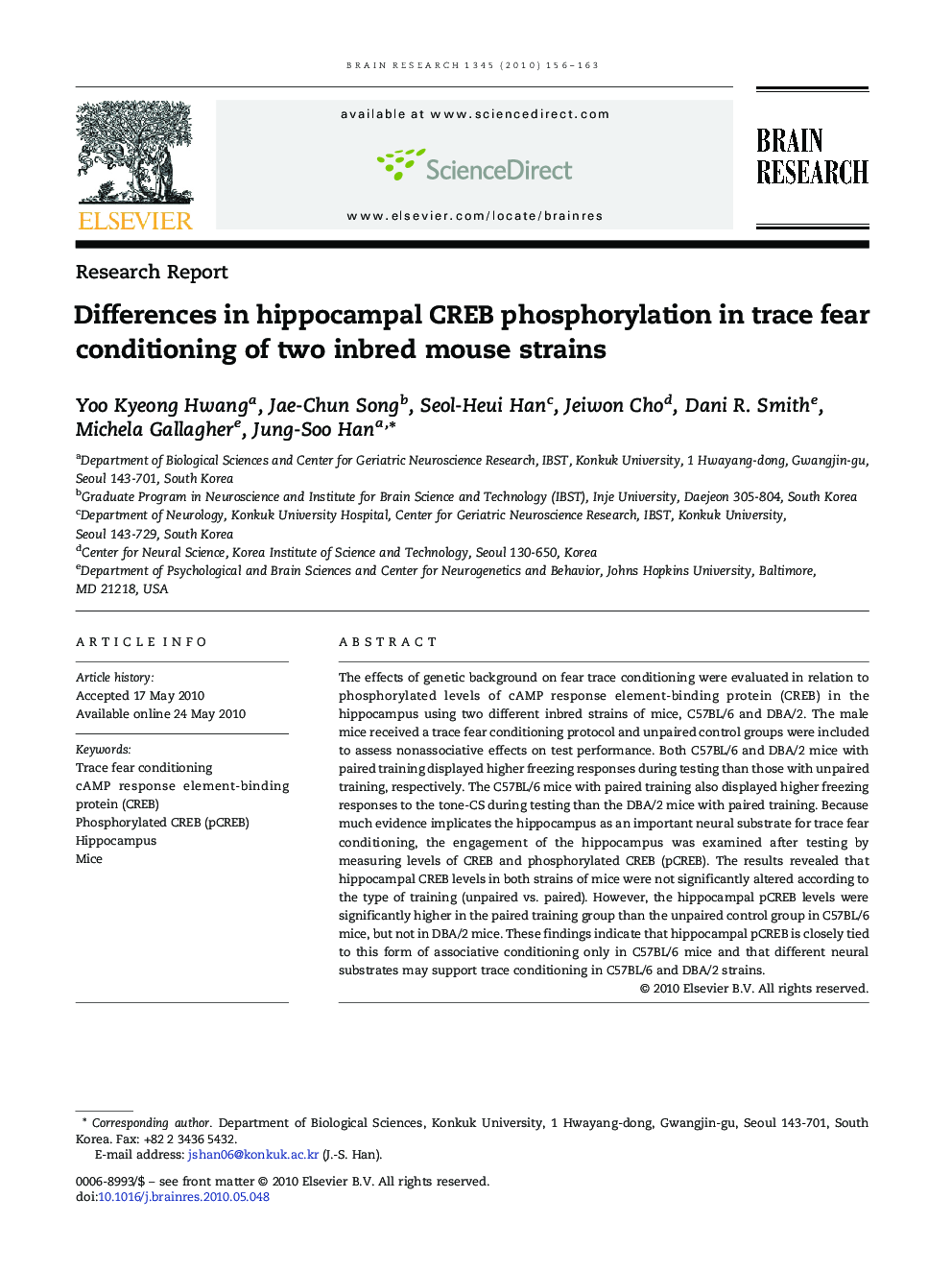| Article ID | Journal | Published Year | Pages | File Type |
|---|---|---|---|---|
| 4326749 | Brain Research | 2010 | 8 Pages |
The effects of genetic background on fear trace conditioning were evaluated in relation to phosphorylated levels of cAMP response element-binding protein (CREB) in the hippocampus using two different inbred strains of mice, C57BL/6 and DBA/2. The male mice received a trace fear conditioning protocol and unpaired control groups were included to assess nonassociative effects on test performance. Both C57BL/6 and DBA/2 mice with paired training displayed higher freezing responses during testing than those with unpaired training, respectively. The C57BL/6 mice with paired training also displayed higher freezing responses to the tone-CS during testing than the DBA/2 mice with paired training. Because much evidence implicates the hippocampus as an important neural substrate for trace fear conditioning, the engagement of the hippocampus was examined after testing by measuring levels of CREB and phosphorylated CREB (pCREB). The results revealed that hippocampal CREB levels in both strains of mice were not significantly altered according to the type of training (unpaired vs. paired). However, the hippocampal pCREB levels were significantly higher in the paired training group than the unpaired control group in C57BL/6 mice, but not in DBA/2 mice. These findings indicate that hippocampal pCREB is closely tied to this form of associative conditioning only in C57BL/6 mice and that different neural substrates may support trace conditioning in C57BL/6 and DBA/2 strains.
